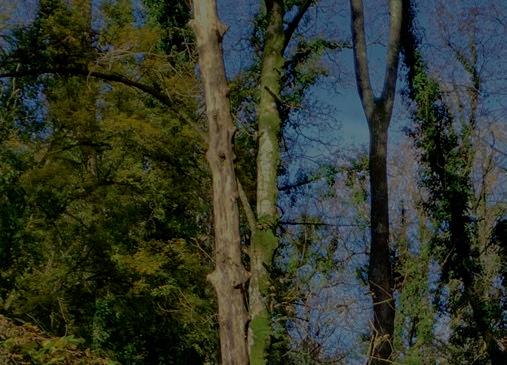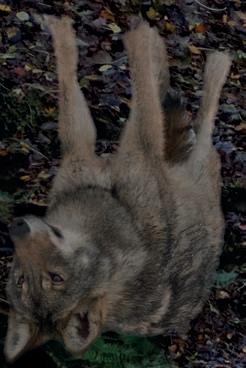
4 minute read
Wolves of Torbay
Torbay’s Wolves

Advertisement

Kevin Dixon takes a look at the history of wolves in Torbay and how a pack of wolf cubs has been brought to Devon as part of a project to look at reintroducing them into the wild.

The founder of Torre Abbey William Brewer was also Sheri of Devon and, under Richard I (1189–1199), was one of the justiciars appointed to administer the kingdom while the King was on the ird Crusade. He was an important man, probably born at Tor. He was so important that King John (1166-1216) gave William Brewer, “the licence to enclose his woods at Toar (Tor), Candlelight, Rudden, and Ailesbeare in Devon, with free liberty to hunt the hare, fox, cat and wolf throughout Devonshire”.
What is interesting here is the speci c mention of the wolf. Wolves were certainly in the Bay in ancient times – an almost entire skull was discovered in Kent’s Cavern, exactly equal in size to that of an Arctic wolf. (But were they still around in the thirteenth century in South Devon? It was generally believed that King Edgar had exterminated the wolf throughout Devon in 961-5. Traditionally, humans have viewed wolves negatively, seeing them to be dangerous, as nuisances, and to be destroyed. Yet the wolf has an underserved reputation – they’re not brave hunters and attack only the young and the sick in a herd. Nevertheless, wolves eat deer and so there was competition between wolves and human hunters. And this negative reputation goes back a long way – the Bible contains 13 references to wolves, usually as metaphors for greed and destructiveness. In the New Testament, Jesus used wolves as illustrations to the dangers His followers would have faced should they follow him. e wolf could once be found in on every continent in the Northern Hemisphere – and was one of the rst species to be reduced once a signi cant population of humans settled. Roman and Saxon chronicles indicate that wolves were extraordinarily numerous in Britain. Eventually technology made the killing of wolves easier and control became extermination – the species disappearing from Britain through a combination of deforestation and active hunting through bounty systems.
is extermination took centuries. e ninth century Anglo-Saxon Chronicle describes January as ‘Wolf monath’, as this was the rst full month of wolf hunting by the nobility – o cially, this hunting season would end on 25 March. English wolves were more often trapped than hunted, with Anglo-Saxon charters in Devonshire mentioning ‘wolf pits’ for trapping the animals.
Wolf pelts were certainly an object of value. In AD 950, King Athelstan imposed an annual tribute of 300 wolf skins on Welsh king HywelDda, while William of Malmesbury states that Athelstan’s nephew Edgar the Peaceful demanded a tribute of wolf skins on King Constantine of Wales.
e Norman kings (1066-1154) employed servants as wolf hunters and many held lands granted on condition that they ful lled this duty. Criminals, rather than being put to death, could be ordered to provide a certain number of wolf tongues annually.
But it was King Edward I (1272-1307) who ordered the total extermination of all wolves in his kingdom. is nal extinction is thought to have come about during the reign of Henry VII (1485–1509) by which time wolves had become limited to the Lancashire forests, the Derbyshire Peak District, and the Yorkshire Wolds. And once they were eradicated, wolves were almost completely forgotten by the Bay’s country folk. Very little is told of them in historical lore and parish records, and just a few stray bones and teeth remain. Accordingly, while other parts of Britain and across Europe there remain wolf traditions – and even stories of werewolves – here we have few references in our folk tales. What we do have are reintroduced tales taken from Norse and Germanic mythology, which often featured malevolent wolves. For example, the German Brothers Grimm adapted the tenth-century Italian fairy tale Little Red Riding Hood.
Now the role of wolves and other predators in maintaining the ecosystem has changed. In 2017 a pack of wolf cubs was imported to Devon as part of an ongoing attempt to reintroduce the animals into the wild. ese European wolves travelled from Sweden to a new home at Wildwood Escot Park. However, if wolves are reintroduced to the wild in Britain, it’s likely to be in northern Scotland so don’t expect to see any locally outside of Paignton Zoo just yet. Wolves were certainly in the Bay in ancient times – an almost entire skull was discovered in Kent’s Cavern, exactly equal in size to that of an Arctic wolf “











